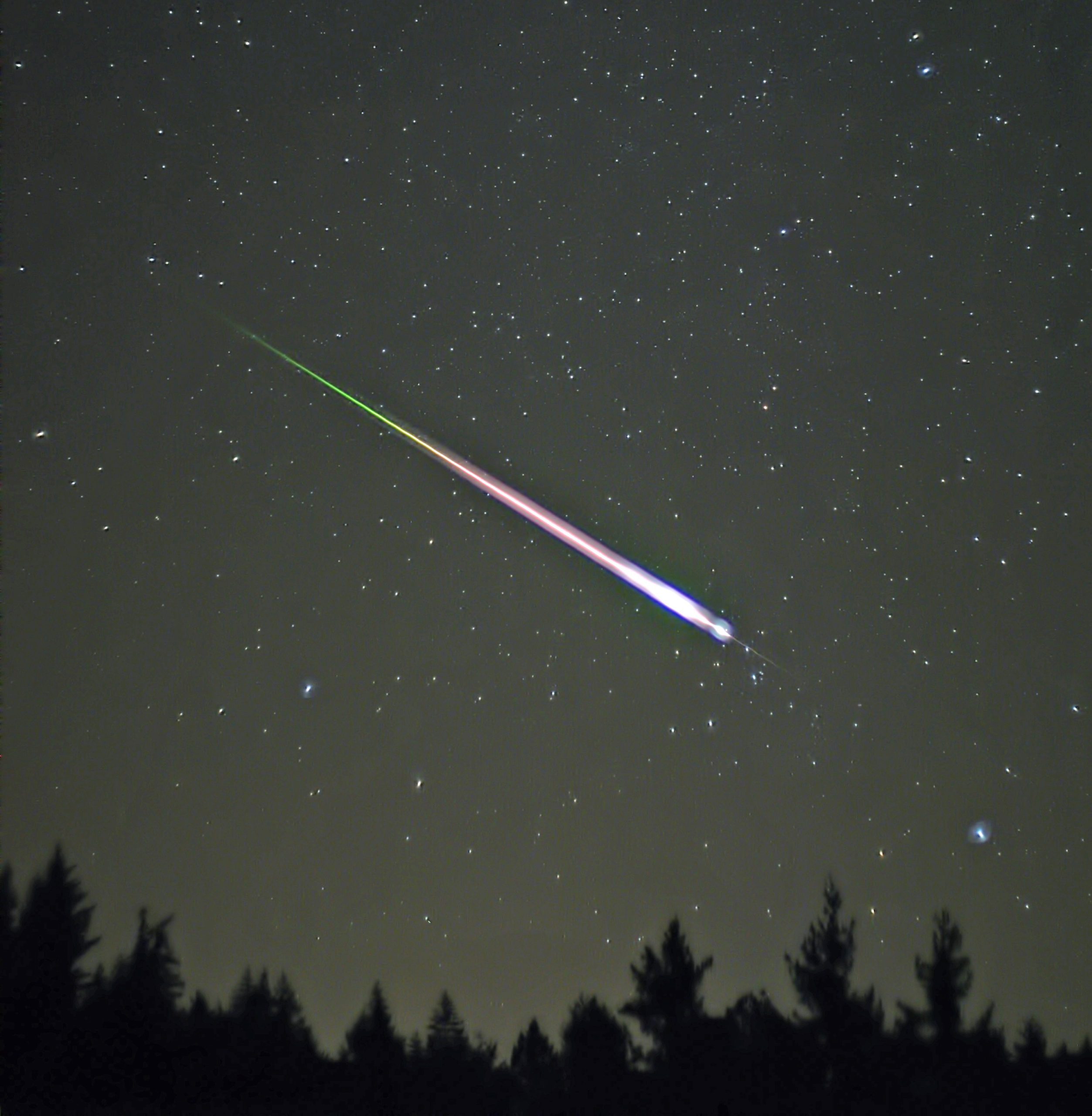NOVEMBER 15, 1927: Arnold Schwassmann and Arno Wachmann at Hamburg Observatory in Bergedorf, Germany, discover a very unusual comet, 29P/Schwassmann-Wachmann 1, that travels entirely between the orbits of Jupiter and Saturn and that undergoes repeated outbursts at irregular intervals. It is this week’s “Comet of the Week.”
NOVEMBER 15, 2016: Polish astronomers Filip Berski and Piotr Dybczynski announce their findings that the star Gliese 710, currently located 64 light-years away, will pass just 13,400 AU from the sun 1.35 million years from now. The significance of this event, including its effects on the Oort Cloud, is discussed in a previous “Special Topics” presentation.
NOVEMBER 16, 1835: Comet 1P/Halley passes through perihelion at a heliocentric distance of 0.587 AU. The story of Comet Halley, including important observations made during this return, is the subject of a previous “Special Topics” presentation.
NOVEMBER 17, 1966: An extremely strong display of the Leonid meteor shower is visible across the western U.S. – a display that I personally witnessed. The Leonid meteors are associated with Comet 55P/Tempel-Tuttle, and the relationship between comets and meteor showers is the subject of this week’s “Special Topics” presentation.
NOVEMBER 17, 1998: A strong display of the Leonid meteor shower, involving many bright fireballs, is widely observed from many places around the world. Studies of this shower were instrumental in defining the relationship between comets and meteor showers, as discussed in this week’s “Special Topics” presentation.

NOVEMBER 17, 2020: The Leonid meteor shower is expected to be at its peak. This will likely be a pretty weak display, with no more than perhaps 10 meteors per hour, although since the moon will be just past its “new moon” phase the viewing conditions are good this year.
NOVEMBER 18, 1999: A strong display of the Leonid meteor shower is visible from parts of Europe and the Middle East. Observers reported five brief flashes on the moon’s unlit side that were apparently due to Leonid meteors striking the lunar surface.
NOVEMBER 19, 2005: JAXA’s Hayabusa mission briefly touches down on the surface of the Apollo-type asteroid (25143) Itokawa, although this was not realized until later. Hayabusa would briefly touch down on the asteroid again six days later and collect a small amount of surface materials that it eventually returned to Earth. The Hayabusa mission is discussed in more detail in a previous “Special Topics” presentation.
More from Week 47:
Comet of the Week Special Topic Free PDF Download Glossary
Ice and Stone 2020 Home Page


